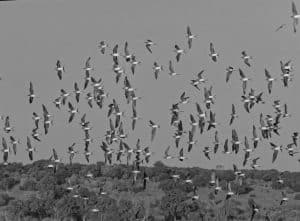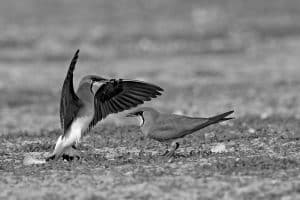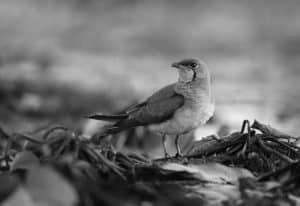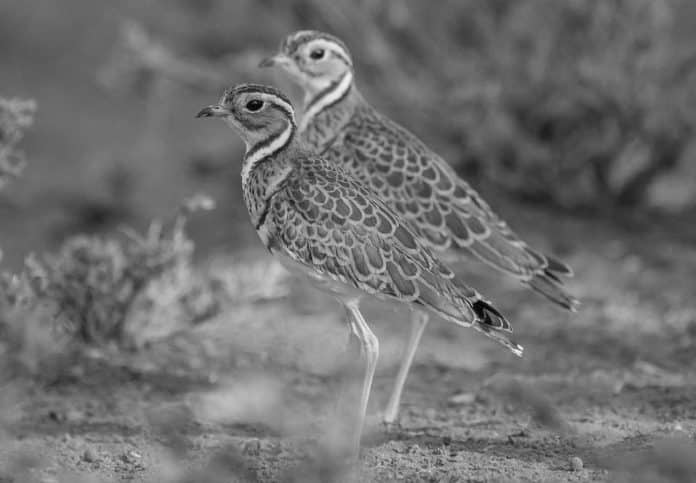Introduction to Pratincoles and Coursers
Tanzania, with its diverse wildlife and stunning landscapes, is home to a unique aerial spectacle that captivates birdwatchers and nature enthusiasts alike. Pratincoles and coursers, two distinct bird species, grace the skies of Tanzania with their extraordinary flying abilities and fascinating behaviors. These birds are known for their graceful flight patterns, swift movements, and striking appearances. In this article, we will delve into the world of pratincoles and coursers in Tanzania, exploring their habitat, behavior, migration patterns, and the best ways to witness this awe-inspiring spectacle.
Habitat and Distribution of Pratincoles and Coursers in Tanzania

Pratincoles and coursers inhabit various regions of Tanzania, each with its unique characteristics and ecosystems. These birds can be found in the grasslands, savannas, and wetlands of Tanzania, where they thrive in the diverse range of habitats available to them. The Rufous-bellied Heron, African Skimmer, and Great Snipe are common companions of pratincoles and coursers in these habitats.
The Serengeti National Park, Ngorongoro Crater, and Selous Game Reserve are some of the notable locations where pratincoles and coursers can be spotted in Tanzania. These areas provide the ideal combination of open grasslands, water bodies, and abundant food sources, which attract these birds in large numbers. The rich biodiversity of Tanzania’s national parks and reserves makes it an excellent destination for birdwatchers seeking to witness the spectacle of pratincoles and coursers.
The Unique Behavior of Pratincoles and Coursers
Pratincoles and coursers exhibit fascinating behavior that sets them apart from other bird species. Pratincoles, with their slender bodies and long wings, are known for their impressive aerial acrobatics. They effortlessly glide through the air, dipping and diving as they catch insects on the wing. Coursers, on the other hand, are ground-dwelling birds that use their incredible speed and agility to chase down prey on foot. They have long legs and sharp beaks, which they use to catch insects, lizards, and small rodents.
Both pratincoles and coursers are highly social birds, often forming large flocks during the breeding season. They communicate through various vocalizations, including calls, whistles, and displays of courtship. These birds have also developed unique adaptations to survive in their environments. For instance, pratincoles have specially adapted feathers that enable them to drink water while in flight, a behavior rarely seen in other bird species.
The Annual Migration of Pratincoles and Coursers in Tanzania

One of the most remarkable spectacles involving pratincoles and coursers in Tanzania is their annual migration. These birds undertake long-distance journeys, traveling thousands of kilometers across different continents. The migration typically occurs during the wet season when food sources become abundant and favorable breeding conditions arise.
Pratincoles and coursers migrate in large flocks, creating a breathtaking sight as they fill the skies with their swift and synchronized movements. The migration routes vary depending on the species and their specific breeding grounds. Some pratincoles and coursers fly from Tanzania to other parts of Africa, while others make their way to Europe or Asia. The exact routes and timing of the migration can vary from year to year, influenced by climatic conditions and the availability of food.
Best Time and Locations to Witness the Aerial Spectacle
To witness the aerial spectacle of pratincoles and coursers in Tanzania, it is essential to visit during the appropriate time of year. The wet season, which typically falls between November and April, is the ideal time to observe these birds in their full glory. During this period, the grasslands and wetlands of Tanzania come alive with an abundance of insects and other small prey, attracting pratincoles and coursers in large numbers.
The Serengeti National Park and the Ngorongoro Crater are prime locations to witness this spectacle. The open grasslands and the presence of water bodies make these areas highly attractive to pratincoles and coursers. The Selous Game Reserve, with its vast wetlands and diverse birdlife, is another recommended destination for birdwatchers seeking to witness the aerial display of these remarkable birds.
Conservation Efforts for Pratincoles and Coursers in Tanzania
As with many bird species worldwide, pratincoles and coursers face various threats to their survival. Habitat loss, climate change, and human activities such as agriculture and infrastructure development pose significant risks to their populations. Fortunately, Tanzania has recognized the importance of conserving these birds and their habitats.
The Tanzanian government, in collaboration with conservation organizations, has implemented measures to protect the natural habitats of pratincoles and coursers. This includes the establishment of protected areas, implementing sustainable land-use practices, and raising awareness among local communities about the importance of conserving these birds. By supporting these conservation efforts, visitors can contribute to the long-term survival of pratincoles and coursers in Tanzania.
Other Bird Species to Look Out for in Tanzania
While pratincoles and coursers steal the show with their aerial spectacle, Tanzania is also home to a diverse array of other bird species. The country boasts over 1,000 bird species, making it a paradise for birdwatchers. From majestic raptors like the African Fish Eagle and Martial Eagle to colorful species like the Lilac-breasted Roller and the African Paradise Flycatcher, Tanzania offers a birding experience like no other.
Bird enthusiasts visiting Tanzania can also spot endemic species such as the Grey-breasted Spurfowl and the Udzungwa Partridge. The diverse range of habitats, including forests, wetlands, and mountains, provides opportunities to encounter a wide variety of bird species. Whether you’re a seasoned birder or a novice enthusiast, Tanzania promises to deliver an unforgettable birdwatching experience.
Tips for Birdwatching and Photography During the Spectacle

To make the most of your birdwatching and photography experience during the pratincole and courser spectacle in Tanzania, it is essential to come prepared. Here are some tips to enhance your experience:
- Bring a pair of binoculars or a spotting scope to get a closer look at the birds in flight and their unique behaviors.
- Be patient and observant, as pratincoles and coursers can be elusive at times. Take your time to scan the skies and grasslands for any signs of their presence.
- Dress appropriately for the weather and wear comfortable footwear for long walks in the national parks and reserves.
- Respect the natural habitats of the birds and adhere to any guidelines or regulations set by the park authorities.
- If you’re into photography, bring a telephoto lens to capture stunning close-up shots of these magnificent birds in action.
- Consider hiring a knowledgeable local guide who can assist you in locating the best spots for birdwatching and share valuable insights about the behavior of pratincoles and coursers.
Recommended Tours and Guides for Pratincoles and Coursers in Tanzania
For those seeking a guided experience to witness the pratincole and courser spectacle in Tanzania, several tour operators and guides specialize in birdwatching adventures. These experts have extensive knowledge of the local bird species, their habitats, and migration patterns. They can tailor your itinerary to maximize your chances of encountering pratincoles and coursers, ensuring an unforgettable experience.
When choosing a tour or guide, look for those who prioritize ethical and sustainable practices, support local communities, and contribute to conservation efforts. Research their credentials, read reviews from previous clients, and inquire about their birdwatching experience in Tanzania. A well-planned tour or guide can greatly enhance your birdwatching adventure and provide valuable insights into the world of pratincoles and coursers.
Conclusion: The Awe-Inspiring Beauty of Pratincoles and Coursers in Tanzania
The pratincole and courser spectacle in Tanzania is a testament to the extraordinary beauty and wonder of the natural world. These remarkable birds, with their unique behaviors and stunning appearances, create a mesmerizing aerial display that leaves observers in awe. Tanzania’s diverse habitats and conservation efforts provide an ideal environment for pratincoles and coursers to thrive and continue their remarkable journeys.
By visiting Tanzania and experiencing this aerial spectacle firsthand, we not only witness the magnificence of pratincoles and coursers but also contribute to their conservation. Let us cherish and protect these birds and their habitats, ensuring that future generations can also marvel at the awe-inspiring beauty of pratincoles and coursers in Tanzania.


































